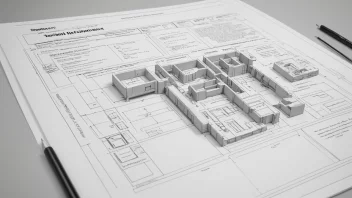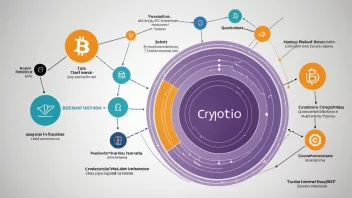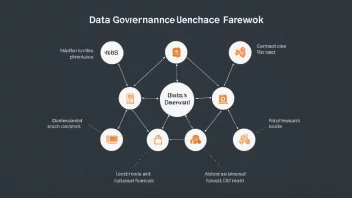In recent years, cloud computing has transcended its role as a mere technological advancement and has emerged as a transformative force across various sectors, including urban development. The interplay between cloud computing and urban environments reshapes how cities are planned, managed, and experienced by their inhabitants. With the increasing need for efficient data management, real-time analytics, and cost-effective infrastructure, urban planners and developers are increasingly relying on cloud technologies. This article delves into the multifaceted influence of cloud computing on urban development, examining its applications, benefits, challenges, and future prospects.
Understanding Cloud Computing
Cloud computing refers to the delivery of computing services—servers, storage, databases, networking, software, analytics, and intelligence—over the internet (the cloud). This model allows organizations to access and utilize computing resources as needed, without the burden of managing physical hardware. The key characteristics of cloud computing include flexibility, scalability, and cost-effectiveness, making it an attractive option for urban development projects.
Applications of Cloud Computing in Urban Development
The applications of cloud computing in urban development are vast and varied, enabling smarter and more sustainable cities. Here are some notable examples:
Smart City Initiatives
Cloud computing plays a critical role in the development of smart cities, which leverage technology and data to enhance the quality of life for residents. By using cloud platforms, cities can collect, store, and analyze data from various sources, such as IoT devices, traffic cameras, and environmental sensors. This data informs decision-making and helps optimize city services such as waste management, transportation, and energy consumption.
Urban Planning and Design
Urban planners utilize cloud-based Geographic Information Systems (GIS) to visualize and analyze spatial data. Cloud GIS allows for real-time collaboration among stakeholders, facilitating the sharing of maps, plans, and data across departments and agencies. This collaborative approach leads to more informed planning decisions and fosters public engagement by making information accessible to citizens.
Public Safety and Emergency Response
Cloud computing enhances public safety through improved communication and coordination among emergency services. Cloud-based systems enable first responders to access real-time data and analytics, helping them respond more effectively to emergencies. Additionally, cloud technologies support predictive analytics, which can identify potential hazards and allow for proactive measures to mitigate risks.
Transportation and Mobility Solutions
Cloud computing enables the development of advanced transportation systems, including intelligent traffic management and connected vehicle technologies. By leveraging real-time data, cities can optimize traffic flow, reduce congestion, and enhance public transportation services. Cloud-based platforms also support ride-sharing and micro-mobility solutions, making urban transportation more efficient and accessible.
Benefits of Cloud Computing in Urban Development
The integration of cloud computing into urban development offers numerous benefits:
- Cost Efficiency: Cloud solutions often reduce the need for substantial upfront investments in infrastructure, allowing cities to allocate resources more effectively.
- Scalability: Cloud services can be easily scaled up or down based on demand, providing flexibility as urban populations grow and change.
- Enhanced Collaboration: Cloud platforms facilitate collaboration among various stakeholders, including government agencies, private sector partners, and citizens.
- Data-Driven Decision Making: The ability to collect and analyze vast amounts of data leads to more informed decisions that can improve urban services.
- Sustainability: Cloud computing can contribute to sustainability efforts by optimizing resource use, reducing waste, and lowering carbon footprints.
Challenges and Considerations
Despite its many advantages, the adoption of cloud computing in urban development is not without challenges:
- Data Privacy and Security: With the increased collection of data comes concerns about privacy and security. Cities must ensure that sensitive information is protected from breaches and misuse.
- Infrastructure Limitations: Not all urban areas have the necessary infrastructure to support cloud computing, particularly in developing regions.
- Interoperability: Different cloud systems and technologies may not always work seamlessly together, creating challenges in data sharing and collaboration.
- Digital Divide: The benefits of cloud computing may not be equitably distributed, as some populations may lack access to the necessary technology or skills.
Future Prospects of Cloud Computing in Urban Development
The future of urban development is likely to be increasingly shaped by cloud computing. As cities continue to embrace digital transformation, several trends can be anticipated:
- Integration with AI and Machine Learning: The combination of cloud computing with AI and machine learning will lead to more sophisticated data analytics, enhancing urban services and infrastructure.
- Increased Citizen Engagement: Cloud platforms will facilitate greater citizen participation in urban planning and decision-making processes, fostering a more inclusive approach to development.
- Resilience and Adaptability: Cloud computing will enable cities to become more resilient to challenges such as climate change, pandemics, and other disruptions by providing the tools needed for rapid response and recovery.
Conclusion
Cloud computing is revolutionizing urban development by providing innovative solutions that enhance efficiency, sustainability, and citizen engagement. From smart city initiatives to advanced transportation systems, the applications of cloud technology are vast and transformative. However, as cities navigate the challenges associated with data privacy, infrastructure, and the digital divide, it is imperative that stakeholders work collaboratively to harness the full potential of cloud computing. By doing so, urban environments can evolve into smarter, more connected, and ultimately more livable spaces for all residents.






